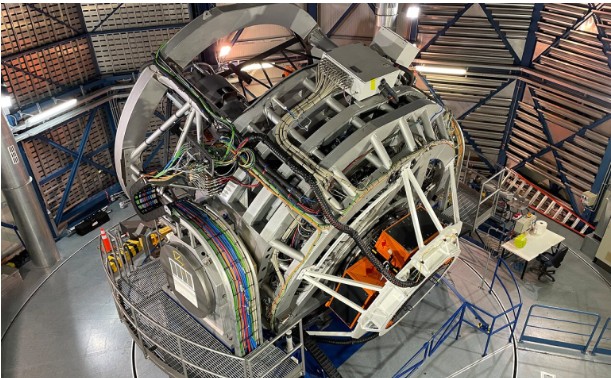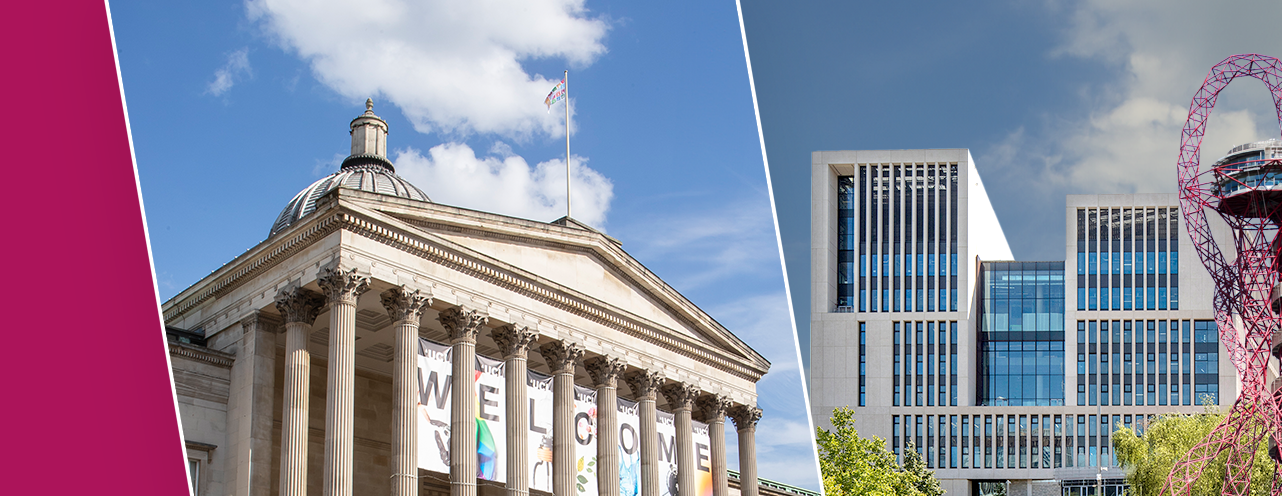
- ...
Masters Compare - Find your perfect masters course.

The largest multi-object spectroscopic survey facility in the southern hemisphere, which UCL engineers helped design and build, has taken its first observations, marking the start of its scientific journey.

The 4-metre Multi-Object Spectroscopic Telescope (4MOST) facility was installed on the VISTA telescope at the European Southern Observatory’s (ESO) Paranal Observatory in Chile. It does not take images of the sky; it records spectra, capturing the light of each object in every individual colour.
With this capability, it can unravel the light of 2,400 celestial objects simultaneously into 18,000 colour components, allowing astronomers to study their detailed chemical composition and properties.
UCL had a key involvement in the design, assembly and test of the 4MOST optical corrector, which consists of four large lenses, the biggest of which is 0.9m in diameter. All of the lenses had to be aligned to a high accuracy of better than 100 micrometres to provide the required high-quality images over 4MOST’s wide field of view.
Once fully operational, 4MOST will investigate the formation and evolution processes of stars and planets, the Milky Way and other galaxies, black holes and other exotic objects, and of the Universe as a whole.
By analysing the detailed rainbow-like colours of thousands of objects every 10–20 minutes, 4MOST will build a catalogue of temperatures, chemical compositions, velocities and many more physical parameters of tens of millions of objects spread across the entire Southern sky.
4MOST is unique in its combination of large field of view, number of simultaneous observed objects, and number of spectral colours simultaneously registered.
At the heart of the system, 4MOST uses 2,438 optical fibres, each the size of a human hair, to catch the light of celestial objects. Light from each of these fibres is transported to the spectrographs that break up the light in its different colours.
Professor Peter Doel, of UCL Physics & Astronomy, who was part of the instrumentation team at UCL working on the corrector, said: “We were very proud of the production of the optical corrector and achieving the tight optical alignment specifications required. I’m now extremely happy to see the full instrument commissioned at the telescope and I’m looking forward to the exciting new data that it will produce.”
UCL astronomers are also involved in several of the 4MOST science surveys that will be conducted with the new instrument.
Professor Richard Ellis (UCL Physics & Astronomy) will be using 4MOST to study distant supernova explosions with the goal of improving our understanding of the expansion history of the universe.
He said: “It’s fantastic to see the first light data arriving from 4MOST. Our team will be undertaking follow-up spectroscopy of various transient events located by the newly-completed Vera Rubin imaging telescope in Chile.”
The Leibniz-Institut für Astrophysik Potsdam (AIP) is the lead institute of the 4MOST Consortium that has built and will scientifically operate the facility.
4MOST Principal Investigator Roelof de Jong, Milky Way section head at AIP, said: “It is incredible to see the first spectra from our new instrument. The data looks fantastic from the start and bodes well for all the different science projects we want to execute. That we can catch the light that has travelled sometimes for billions of light years into a glass fibre the size of a hair is mindboggling. An incredible feat only made possible by an incredible development team. Can’t wait till having the system operating every night.”
About the First Light observations
The First Light observations exemplify the unique capabilities of 4MOST: its ability to observe a very large field of view and its capability to investigate a large number of very different objects and science cases simultaneously in great detail.

Image: The sky around the Sculptor Galaxy NGC 253 and the globular cluster NGC 288 was the target of the first observations with 4MOST. The blue frame shows the boundary of 4MOST's field of view. Each circle symbolises one of the more than 2400 fibres. The embedded images show the spectrum of a stellar cluster in the Sculptor galaxy (top) and the spectrum of a star in the globular cluster (bottom). Credit: AIP/R. de Jong, CRAL/J.-K. Krogager, Background: Harshwardhan Pathak/Telescope Live
Users, surveys, science
The 4MOST science team consists of more than 700 investigators from universities and research institutes around the world. In its first five years of operations, 4MOST will conduct 25 different science programmes.
Uniquely, the multi-fibre nature of 4MOST enables many science programmes to be observed simultaneously. For example, a few fibres can be used to study rare objects, while at the same time another programme can use most other fibres to make large statistical samples of stars or galaxies.
Highlighted 4MOST science cases are the origin of the chemical elements and the formation of the first stars, the growth of the Milky Way over cosmic time, the formation and evolution of galaxies and black holes, the make-up of the unseen Dark Matter that seems to encompasses most of the mass in galaxies, and the nature of Dark Energy that drives the accelerating expansion of the Universe.

Masters study opportunities at UCL Make your Master’s matter For a real-world advantage, study at a world-class university and your Master’s wi...